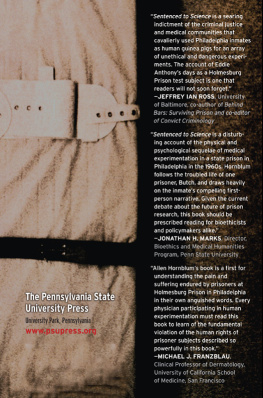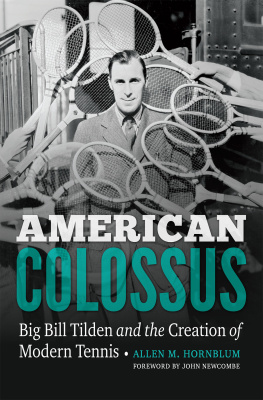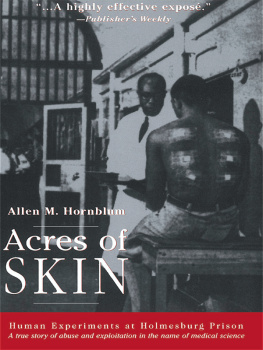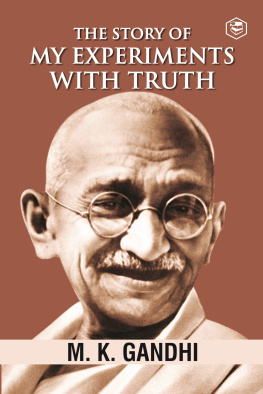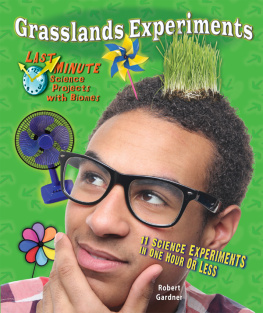Allen M. Hornblum - Sentenced to Science: One Black Mans Story of Imprisonment in America
Here you can read online Allen M. Hornblum - Sentenced to Science: One Black Mans Story of Imprisonment in America full text of the book (entire story) in english for free. Download pdf and epub, get meaning, cover and reviews about this ebook. year: 2015, publisher: Penn State University Press, genre: Detective and thriller. Description of the work, (preface) as well as reviews are available. Best literature library LitArk.com created for fans of good reading and offers a wide selection of genres:
Romance novel
Science fiction
Adventure
Detective
Science
History
Home and family
Prose
Art
Politics
Computer
Non-fiction
Religion
Business
Children
Humor
Choose a favorite category and find really read worthwhile books. Enjoy immersion in the world of imagination, feel the emotions of the characters or learn something new for yourself, make an fascinating discovery.
- Book:Sentenced to Science: One Black Mans Story of Imprisonment in America
- Author:
- Publisher:Penn State University Press
- Genre:
- Year:2015
- Rating:4 / 5
- Favourites:Add to favourites
- Your mark:
Sentenced to Science: One Black Mans Story of Imprisonment in America: summary, description and annotation
We offer to read an annotation, description, summary or preface (depends on what the author of the book "Sentenced to Science: One Black Mans Story of Imprisonment in America" wrote himself). If you haven't found the necessary information about the book — write in the comments, we will try to find it.
From 1951 until 1974, Holmesburg Prison in Philadelphia was the site of thousands of experiments on prisoners conducted by researchers under the direction of University of Pennsylvania dermatologist Albert M. Kligman. While most of the experiments were testing cosmetics, detergents, and deodorants, the trials also included scores of Phase I drug trials, inoculations of radioactive isotopes, and applications of dioxin in addition to mind-control experiments for the Army and CIA. These experiments often left the subject-prisoners, mostly African Americans, in excruciating pain and had long-term debilitating effects on their health. This is one among many episodes of the sordid history of medical experimentation on the black population of the United States.
The story of the Holmesburg trials was documented by Allen Hornblum in his 1998 book Acres of Skin. The more general history of African Americans as human guinea pigs has most recently been told by Harriet Washington in her 2007 book Medical Apartheid. The subject is currently a topic of heated public debate in the wake of a 2006 report from an influential panel of medical experts recommending that the federal government loosen the regulations in place since the 1970s that have limited the testing of pharmaceuticals on prison inmates.
Sentenced to Science retells the story of the Holmesburg experiments more dramatically through the eyes of one black man, Edward Butch Anthony, who suffered greatly from the experiments for which he volunteered during multiple terms at the prison. This is not only one black mans highly personal account of what it was like to be an imprisoned test subject, but also a sobering reminder that there were many African Americans caught in the viselike grip of a scientific research community willing to bend any code of ethics in order to accomplish its goals and a criminal justice system that sold prisoners to the highest bidder.
Allen M. Hornblum: author's other books
Who wrote Sentenced to Science: One Black Mans Story of Imprisonment in America? Find out the surname, the name of the author of the book and a list of all author's works by series.

